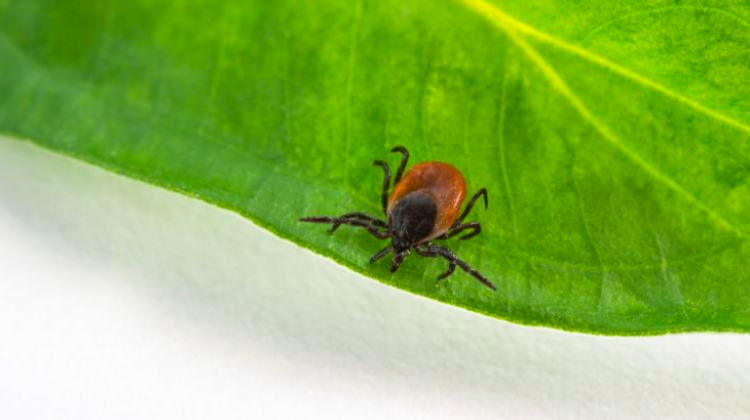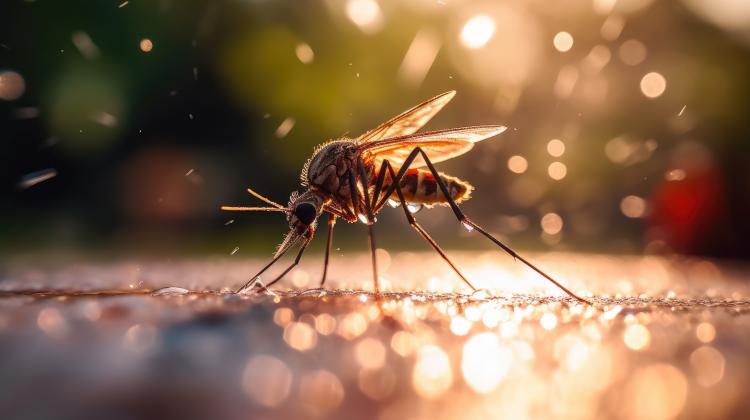Ticks react to electromagnetic radiation
 Photo: Fotolia
Photo: Fotolia
Radiofrequency electromagnetic radiation can affect the distribution of ticks in the natural environment. This is indicated by the results of laboratory experiments carried out in Polish-Slovak cooperation.
A few visits outside the city are enough to find out in some places ticks are not a major problem, and in others their numbers are huge; a map of their densities would resemble a mosaic. It is not a coincidence. Ticks gather in places where there are more animals, so it is easier to find a meal. Various signals indicate proximity of food, such as changes in temperature or concentration of carbon dioxide.
Now it turns out that electromagnetic radiation may also affect the distribution of ticks, scientists from Poland and Slovakia suggest in "Experimental and Applied Acarology". The authors of the paper are Viktória Majláthová and Blažen Vargová from the Slovak Academy of Sciences in Košice, Igor Majláth and Tomáš Raši from Pavlo Jozef Šafárik University in Košice, Juraj Kurimský, Roman Cimbala and Michal Kosterec from the Technical University of Košice, and Piotr Tryjanowski from the Institute of Zoology at the University of Life Sciences in Poznań and Łukasz Jankowiak from the University of Szczecin.
Researchers note that this is just a hypothesis, but they have strong arguments. These have been provided by an experiment carried out in the laboratory on over eight hundred (!) meadow ticks (Dermacentor reticulatus). The researchers were interested in ticks` response of to radiation with the frequency that our cell phones and telephony towers emit.
Researchers did not use phones. A specially constructed device was used to check the response of ticks to the presence of an electromagnetic field. "It`s a kind of a simple maze - a two-armed polypropylene tube with one arm transparent and the other covered with copper. When the labyrinth was placed in the electromagnetic field, the transparent arm was exposed to radiation, and the one covered with copper was shielded" - explains Dr. Viktoria Majlathova from the Institute of Parasitology of the Slovak Academy of Sciences.
During the experiment, the researchers released ticks into the tube, which they then placed in an electromagnetic field with a frequency of 900 MHz and 5000 MHz (source of radiation with this frequency are cell phones and Wi-Fi networks, respectively). Each tested tick had two possibilities: it could go to the part subjected to radiation - or to the one that was shielded from it by copper.
Prof. Piotr Tryjanowski from the Institute of Zoology at the University of Life Sciences in Poznań points out that ticks` response to electromagnetic field was studied in an experimental setup, where other stimuli that could affect their behaviour - odours, changes in humidity or temperature - were excluded. Ticks were studied in complete darkness, so that brightness changes would not affect their reaction.
The authors of the study later checked in which part of the tube each tick ended up. At 900 MHz, ticks clearly preferred the plastic arm, the area subjected to radiation.
However, when the ticks were exposed to radiation at 5000 MHz, they were moving away from it and hid in the shielded part of the tube.
"We found that ticks preferred the electromagnetic field with a frequency of 900 MHz - exactly the one used in mobile phones. It also turned out that they were deterred by electromagnetic field at a frequency that accompanies cell towers" - says Dr. Majlathova.
Authors of the publication emphasize that their study was the first one that allowed to determine the response of ticks to the electromagnetic field associated with telecommunication towers and cell phones. Dr. Majlathova notes that the conclusions from the experiment do not allow to say whether using a mobile phone will attract ticks: "This will have to be checked".
Why do ticks react to electromagnetic field? The main author of the study explains that these organisms use various signals emitted by animals and people, which provide them with information about the proximity of a potential victim. "They react to carbon dioxide in our breath, temperature and other chemical stimuli from the hosts to close their life cycle. The effectiveness of finding a host to drink blood is a question of life and death for a tick. Electromagnetic field can be used as a source of information about an approaching host, because living organisms also generate this type of field" - she says.
PAP - Science in Poland
zan/ ekr/ kap/
tr. RL
Przed dodaniem komentarza prosimy o zapoznanie z Regulaminem forum serwisu Nauka w Polsce.



















